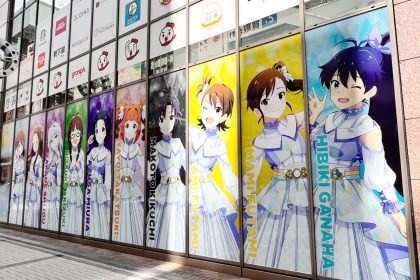Cosplay, short for “costume play,” is a popular hobby and subculture that involves dressing up as fictional characters from various media such as anime, manga, video games, movies, and TV shows. Cosplay has gained significant traction and has become a global phenomenon, with enthusiasts participating in conventions, events, and online communities dedicated to showcasing their costumes and craftsmanship. In this article, we will explore the differences and similarities between Western and Japanese cosplay practices and examine how they influence each other. We will also delve into the global impact of cosplay and its economic implications.
Western Cosplay Practices
A. Origins and Evolution of Western Cosplay
Western cosplay has its roots in the early sci-fi and fantasy conventions that began in the 1930s. Fans of popular franchises started dressing up as their favorite characters, paving the way for the cosplay we know today. Over the years, Western cosplay has evolved, drawing influences from a wide range of sources, including comic books, movies, TV shows, and video games.
B. Western Cosplay Community
The Western cosplay community is vibrant and diverse, with numerous conventions and events taking place throughout the year. These gatherings provide cosplayers with the opportunity to showcase their costumes, participate in contests, and connect with fellow enthusiasts. Additionally, online platforms such as social media and dedicated cosplay websites have facilitated the growth of the Western cosplay community, allowing cosplayers to share their creations and engage with a wider audience.
C. Characteristics of Western Cosplay
Western cosplay is characterized by its emphasis on pop culture and fictional characters. Cosplayers in the West often portray iconic superheroes, characters from popular TV shows and movies, or video game protagonists. There is a wide range of creativity and interpretation when it comes to costume designs, with cosplayers putting their unique spin on well-known characters.
Japanese Cosplay Practices
A. Origins and Evolution of Japanese Cosplay
Japanese cosplay has deep roots in the country’s rich cultural history. It can be traced back to the early 20th century when costume masquerades and role-playing events were popular among Japanese theater and performance arts. However, the modern form of cosplay as we know it today gained prominence in the 1970s with the rise of anime and manga fandoms. Cosplay became an integral part of Japanese fan culture, and its popularity soared over the years.
B. Japanese Cosplay Community
Japan is renowned for its vibrant cosplay community, and the country hosts numerous cosplay events and conventions throughout the year. These events, such as Comiket and Wonder Festival, attract thousands of cosplayers and enthusiasts from all over the world. In addition to conventions, Japan also has specialized cosplay cafes and dedicated cosplay spaces where cosplayers can gather, socialize, and showcase their costumes.
C. Characteristics of Japanese Cosplay
Japanese cosplay often revolves around characters from anime, manga, and video games. There is a strong emphasis on accuracy and attention to detail in recreating the costumes and portraying the characters authentically. Cosplayers in Japan invest significant time and effort into perfecting their costumes, with many adopting advanced techniques and craftsmanship to achieve a high level of accuracy.
Influence between Western and Japanese Cosplay
A. Cross-cultural Exchange
Cosplay practices in the Western and Japanese communities have influenced each other over the years. Western pop culture, such as Hollywood movies and comic books, has had a significant impact on Japanese cosplay. Many Japanese cosplayers dress up as characters from Western franchises, and this cross-cultural exchange has led to a diverse range of costumes and character interpretations.
Similarly, Japanese anime and manga have gained immense popularity worldwide, leading to the adoption of Japanese cosplay practices in the West. Western cosplayers often portray characters from Japanese media, attend anime conventions, and incorporate Japanese cosplay techniques into their creations.
B. Collaboration and Crossover Cosplay
Collaborations between Western and Japanese cosplayers have become increasingly common. Cosplayers from different cultures come together to create stunning crossover costumes, combining elements from Western and Japanese characters. These collaborations not only showcase the talents and creativity of cosplayers but also promote cultural exchange and understanding.
While cross-cultural cosplay collaborations offer exciting opportunities for cosplayers, they also present challenges. Language barriers, cultural differences, and varying cosplay conventions and practices can pose hurdles. However, the shared passion for cosplay often transcends these challenges, leading to unique and memorable collaborations.
C. Shared Trends and Practices
Despite the cultural differences, there are several shared trends and practices in Western and Japanese cosplay. Both communities embrace innovative costume construction techniques, prop making, and special effects to enhance their cosplay presentations. The use of advanced materials, 3D printing, and digital technologies has become increasingly prevalent in both Western and Japanese cosplay circles.
Moreover, certain cosplay themes and trends, such as gender-bending cosplay or group cosplays, have gained popularity worldwide. These trends transcend cultural boundaries and bring cosplayers together, fostering a sense of inclusivity and creativity within the global cosplay community.
Global Impact of Cosplay
A. Cosplay as a Cultural Phenomenon
Cosplay has become more than just a hobby or form of entertainment; it has evolved into a cultural phenomenon with a significant impact on popular culture. Cosplayers are not only avid fans but also influencers who contribute to the promotion and visibility of various media franchises. Cosplay events and conventions serve as platforms for fans to express their love for their favorite characters and create memorable experiences.
Furthermore, cosplay has become a means of self-expression and empowerment for individuals around the world. Cosplayers often find solace in embodying their favorite characters, allowing them to explore different identities and overcome personal obstacles. The inclusive and supportive nature of the cosplay community fosters a sense of belonging and acceptance.
B. Economic Influence of Cosplay
The global cosplay industry has experienced remarkable growth in recent years. The demand for cosplay costumes and accessories, including wigs, has surged, leading to a thriving market. According to market reports, the cosplay costumes and wigs market is projected to reach USD 80.85 billion by 2028, with a significant compound annual growth rate (CAGR) of 14.87%.
This growth can be attributed to factors such as the rising popularity of cosplay events and conventions, the increasing influence of social media, and the expanding anime and gaming industries. Cosplayers and enthusiasts are willing to invest in high-quality costumes and accessories, driving the market forward. The cosplay industry has also created employment opportunities for costume designers, prop makers, wig manufacturers, and event organizers.
Conclusion
Cosplay has transcended cultural boundaries, bringing together enthusiasts from different parts of the world. Western and Japanese cosplay practices have influenced each other, resulting in a dynamic and diverse global cosplay community. The cross-cultural exchange, collaborations, and shared trends have enriched the cosplay experience for cosplayers and fans alike.
The global impact of cosplay extends beyond entertainment; it has become a cultural phenomenon that empowers individuals and contributes to popular culture. As the cosplay industry continues to thrive, with a projected market growth of USD 80.85 billion, it showcases the economic potential and opportunities within the cosplay market.
In conclusion, cosplay serves as a platform for self-expression, creativity, and cultural exchange. The differences and similarities between Western and Japanese cosplay practices highlight the global influence of this vibrant subculture. Whether it’s donning the costume of a beloved superhero or bringing an anime character to life, cosplay allows individuals to immerse themselves in the worlds they love and connect with a community that shares their passion. As cosplay continues to evolve and expand, it will undoubtedly leave a lasting impact on popular culture and the lives of cosplayers worldwide.













